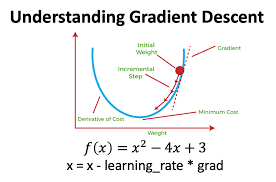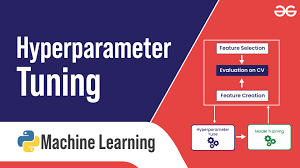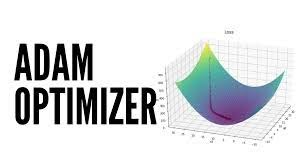Optimization in Deep Neural Networks: Techniques and Best Practices 2024
Introduction
Optimization is a critical step in training Deep Neural Networks (DNNs). The choice of optimization algorithm impacts convergence speed, accuracy, and generalization.
🚀 Why is Optimization Important in Deep Learning?
✔ Ensures efficient training and convergence
✔ Helps escape local minima and saddle points
✔ Prevents vanishing and exploding gradients
✔ Optimizes learning rate for faster convergence
In this guide, we’ll cover:
✅ Challenges in neural network optimization
✅ Gradient-based optimization techniques
✅ Adaptive learning rate algorithms
✅ Momentum-based optimization methods
1. Challenges in Deep Learning Optimization

Optimizing deep networks is challenging due to non-convex loss surfaces. Major challenges include:
🔹 Local Minima – The model gets stuck in a suboptimal point.
🔹 Saddle Points – Points where gradients vanish, slowing training.
🔹 Vanishing & Exploding Gradients – Early layers fail to learn due to extreme weight updates.
🚀 Example:
A DNN trained for image classification may struggle to find the global minimum due to the complexity of the loss function landscape.
✅ Solution:
Advanced optimizers like Momentum, Adam, and RMSProp help escape saddle points and speed up training.
2. Gradient-Based Optimization: Gradient Descent

Gradient Descent (GD) is the foundation of deep learning optimizers. It updates weights iteratively to minimize the loss function.
🔹 Gradient Descent Update Rule:wnew=wold−η∗∇L(w)w_{new} = w_{old} – \eta * \nabla L(w) wnew=wold−η∗∇L(w)
where:
- w = model weights
- η (eta) = learning rate
- ∇L(w) = gradient of the loss function
✅ Types of Gradient Descent
| Type | Description | Use Case |
|---|---|---|
| Batch GD | Uses the full dataset for each update | Slow, but precise |
| Stochastic GD (SGD) | Updates weights after each training sample | Noisy but faster |
| Mini-Batch GD | Updates weights in small batches | Best trade-off |
🚀 Example:
SGD is widely used for large-scale image recognition as it improves speed and efficiency.
✅ Best Practice: Use Mini-Batch GD for a balance of speed and stability.
3. Learning Rate: The Key Hyperparameter

The learning rate (η) controls how much weights change per update.
🔹 Effects of Learning Rate: ✔ Too Small → Training is slow, stuck in local minima.
✔ Too Large → Training oscillates, may never converge.
🚀 Example:
For an NLP model, setting η = 0.0001 might be too slow, while η = 1.0 can cause divergence.
✅ Solution: Use adaptive learning rate optimizers like Adam or RMSProp.
4. Momentum-Based Optimization
Momentum helps models accelerate in the right direction and dampens oscillations.
🔹 Momentum Update Rule:vt=β∗vt−1+η∗∇L(w)wnew=wold−vtv_{t} = β * v_{t-1} + η * ∇L(w) w_{new} = w_{old} – v_{t} vt=β∗vt−1+η∗∇L(w)wnew=wold−vt
where:
- β (beta) = momentum coefficient (typically 0.9).
🚀 Example: Image Recognition ✔ Without momentum: Training gets stuck at saddle points.
✔ With momentum: The optimizer pushes through plateaus for faster convergence.
✅ Momentum accelerates training and prevents getting stuck in local minima.
5. Adaptive Learning Rate Algorithms
Unlike SGD, which uses a fixed learning rate, adaptive optimizers adjust learning rates dynamically.
✅ Popular Adaptive Learning Rate Algorithms
| Algorithm | Key Idea | Use Case |
|---|---|---|
| Adagrad | Reduces learning rate over time | Sparse data (NLP, recommender systems) |
| RMSProp | Keeps learning rate steady using moving averages | Recurrent Neural Networks (RNNs) |
| Adam | Combines Momentum & RMSProp | General deep learning |
🚀 Example: Training a Transformer Model ✔ Adam optimizer dynamically adjusts learning rates per parameter, making it ideal for text-based AI models.
✅ Best Practice: Use Adam for general-purpose deep learning tasks.
6. Optimizing Deep Learning with Adam

Adam (Adaptive Moment Estimation) is the most popular optimizer because it combines momentum and adaptive learning rates.
🔹 Adam Update Rule:mt=β1∗mt−1+(1−β1)∗∇L(w)vt=β2∗vt−1+(1−β2)∗(∇L(w))2m_t = β_1 * m_{t-1} + (1 – β_1) * ∇L(w) v_t = β_2 * v_{t-1} + (1 – β_2) * (∇L(w))^2 mt=β1∗mt−1+(1−β1)∗∇L(w)vt=β2∗vt−1+(1−β2)∗(∇L(w))2
where:
- m_t = first moment estimate (momentum).
- v_t = second moment estimate (variance correction).
🚀 Example: Deep Learning for Self-Driving Cars ✔ SGD struggles with large parameter spaces.
✔ Adam efficiently finds optimal weights, speeding up training.
✅ Best Practice:
✔ Use Adam with default parameters (β1 = 0.9, β2 = 0.999).
✔ Works best for most deep learning models.
7. Choosing the Best Optimizer for Your Task
| Use Case | Recommended Optimizer |
|---|---|
| Image Classification (CNNs) | Adam / SGD with momentum |
| Text Processing (Transformers) | Adam |
| Recurrent Networks (RNNs, LSTMs) | RMSProp |
| Sparse Data (NLP, Recommenders) | Adagrad |
🚀 Example:
For fine-tuning BERT, Adam is preferred over SGD due to its ability to handle large parameter spaces.
✅ General Rule:
✔ Use Adam for most deep learning tasks.
✔ Use RMSProp for recurrent models.
✔ Use SGD+Momentum for vision tasks.
8. Conclusion
Optimization is crucial for efficient deep learning training. The right algorithm can speed up convergence, improve accuracy, and prevent overfitting.
✅ Key Takeaways
✔ Gradient Descent is the foundation of optimization.
✔ Momentum helps escape saddle points and local minima.
✔ Adam is the most widely used adaptive optimizer.
✔ Mini-Batch SGD balances speed and accuracy.
✔ Choosing the right optimizer improves model performance significantly.
💡 Which optimizer do you use for deep learning? Let’s discuss in the comments! 🚀
Would you like a Python tutorial comparing Adam, RMSProp, and SGD on a real dataset? 😊